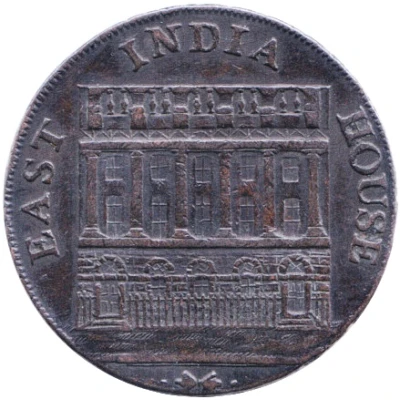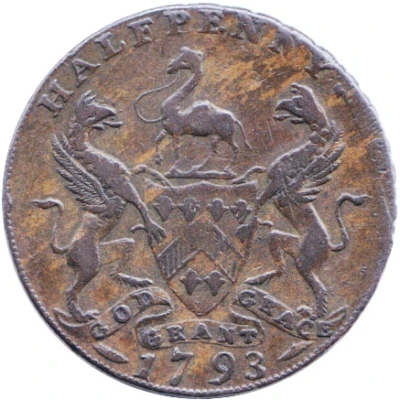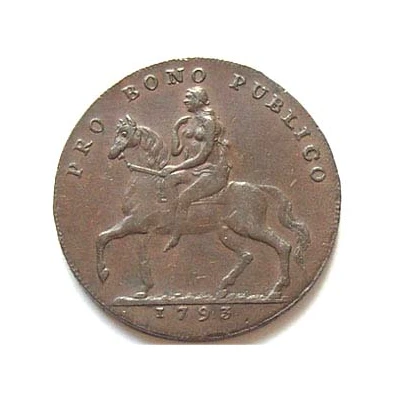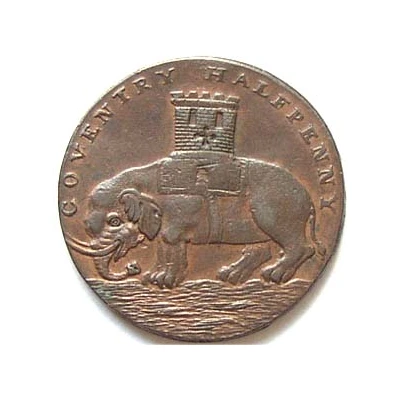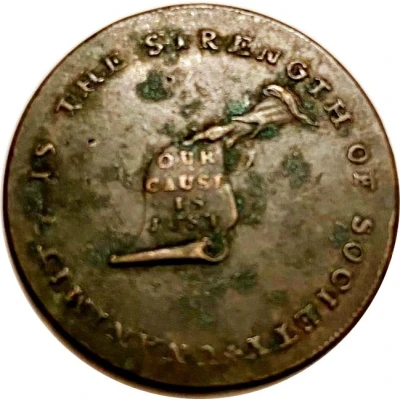


1 Cent Lancashire - Lancaster / Kentucky token ND
| Copper | - | 29 mm |
| Issuer | United Kingdom (United Kingdom, British Overseas Territories and Crown Dependencies) |
|---|---|
| King | George III (1760-1820) |
| Type | Token |
| Years | 1792-1794 |
| Value | ½ Penny (1⁄480) |
| Currency | Conder tokens (1787-1797) |
| Composition | Copper |
| Diameter | 29 mm |
| Shape | Round |
| Technique | Milled |
| Orientation | Coin alignment ↑↓ |
| Demonetized | Yes |
| Updated | 2024-10-09 |
| Numista | N#393094 |
|---|---|
| Rarity index | 97% |
Reverse
Pyramid design made from 15 stars (with twelve points each) joined together with chain links and surrounded by nine groups of emanating rays in the shape of a star, legend around.
Script: Latin
Lettering: E PLURIBUS UNUM
Translation: One from many
Engraver: John Gregory Hancock
Edge
Incuse lettering (varieties exist - see below)
Script: Latin
Lettering: LANCASTER LONDON OR BRISTOL
Comment
This undated token is thought to commemorate the admission of Kentucky to the nation, and thus is thought to have been produced around the time of Kentucky's admission as the fifteenth state in 1792 but before 1796 when Tennessee was admitted. The names for this coin comes from the design on the reverse consisting of a pyramid made from 15 stars (with twelve points each) joined together with chain links and surrounded by nine groups of emanating rays in the shape of a star. Each star has a letter representing one of the thirteen original states as well as one for Vermont (which entered the union 1791) while at the top of the pyramid is a star with a K for Kentucky. The states are listed as follows: top row K (KY); second row RI, VI (RI, VA); third row V, NC, NY (VT, NC, NY); fourth row MS, MD, SC, NH (MA, MD, SC, NH); and the bottom row D, P, NJ, G, C (DE, PA, NJ, GA, CT). Around this design is the legend "E PLURIBUS UNUM" (One from many). The obverse depicts a hand holding a scroll with the words "OUR CAUSE IS JUST" which probably refers to Kentucky's long standing desire to secede from Virginia and become an independent state, while around the rim is the legend "UNANIMITY IS THE STRENGTH OF SOCIETY." The edge of the token is usually plain but some bear the lettering "PAYABLE IN LANCASTER, LONDON OR BRISTOL." This edge legend led Crosby to attribute the token to Lancaster, however, no Lancaster mint is known. Breen suggests the dies may have been engraved by John Gregory Hancock who was employed at the Westwood mint in Birmingham, as he used the "Lancaster" edge lettering on tokens produced for Thomas Worswick and Co., a Lancaster banker. Breen also suspected some of the various planchet types used for the Kentucky token were also used for other tokens produced by the Westwood mint.
Interesting fact
The Token 1 Cent (Lancashire - Lancaster / Kentucky token) ND (1792-1794) from United Kingdom (United Kingdom, British Overseas Territories and Crown Dependencies) made of Copper is interesting because it was used as a form of currency in the late 18th century in the United States, specifically in Kentucky, despite being issued by a British company. This highlights the complex economic and trade relationships between the US and UK during that time period.
